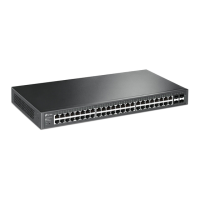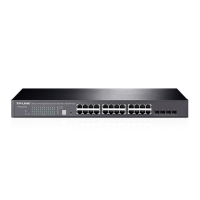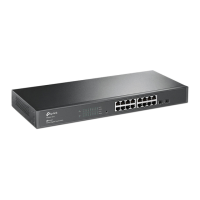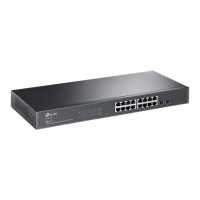Configuration Guide 322
Configuring Spanning Tree MSTP Configurations
P2P Link Select the status of the P2P (Point-to-Point) link to which the ports are
connected. During the regeneration of the spanning tree, if the port of P2P
link is elected as the root port or the designated port, it can transit its state
to forwarding directly.
Three options are supported: Auto, Open(Force) and Closed(Force). By
default, it is Auto.
Auto: The switch automatically checks if the port is connected to a P2P link,
then sets the status as Open or Closed.
Open(Force): A port is set as the one that is connected to a P2P link. You
should check the link first.
Close(Force): A port is set as the one that is not connected to a P2P link. You
should check the link first.
MCheck Select whether to perform MCheck operations on the port. If a port on an
RSTP-enabled/MSTP-enabled device is connected to an STP-enabled
device, the port will switch to STP compatible mode and send packets in STP
format. MCheck is used to switch the mode of the port back to RSTP/MSTP
after the port is disconnected from the STP-enabled device. The MCheck
configuration can take effect only once, after that the MCheck status of the
port will switch to Disabled.
Port Mode Displays the spanning tree mode of the port.
STP: The spanning tree mode of the port is STP.
RSTP: The spanning tree mode of the port is RSTP.
MSTP: The spanning tree mode of the port is MSTP.
Port Role Displays the role that the port plays in the spanning tree.
Root Port: Indicates that the port is the root port in the spanning tree. It
has the lowest path cost from the root bridge to this switch and is used to
communicate with the root bridge.
Designated Port: Indicates that the port is the designated port in the
spanning tree. It has the lowest path cost from the root bridge to this
physical network segment and is used to forward data for the corresponding
network segment.
Master Port: Indicates the port provides the lowest root path cost from the
region to the root bridge in CIST. In CIST, each region is regarded as a switch,
and the master port is the root port of the corresponding region.
Alternate Port: Indicates that the port is the alternate port in the spanning
tree. It is the backup of the root port or master port.
Backup Port: Indicates that the port is the backup port in the spanning tree.
It is the backup of the designated port.
Disabled: Indicates that the port is not participating in the spanning tree.

